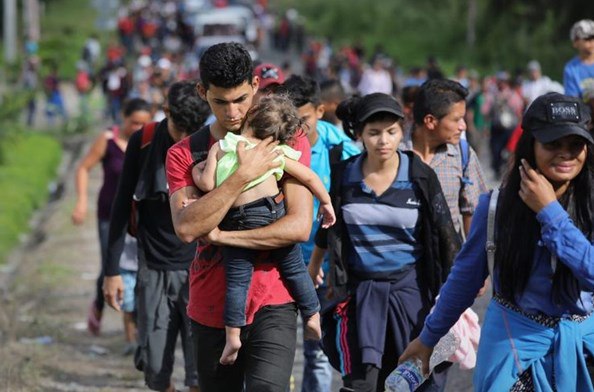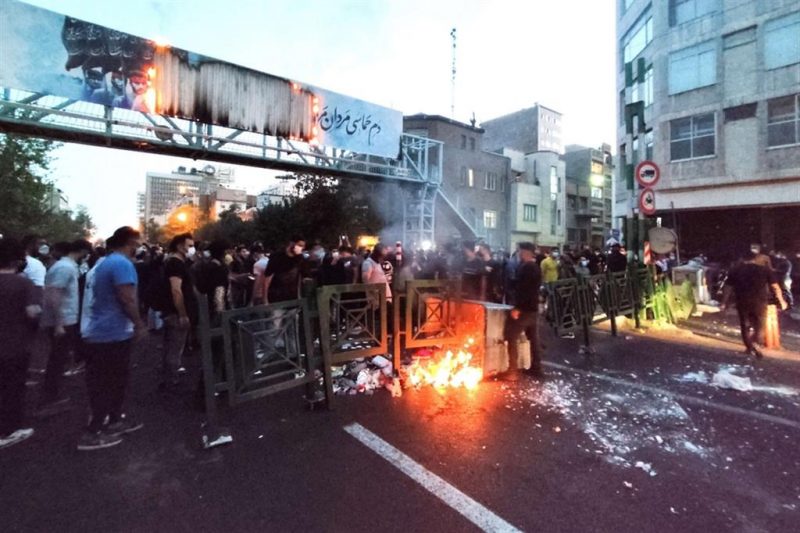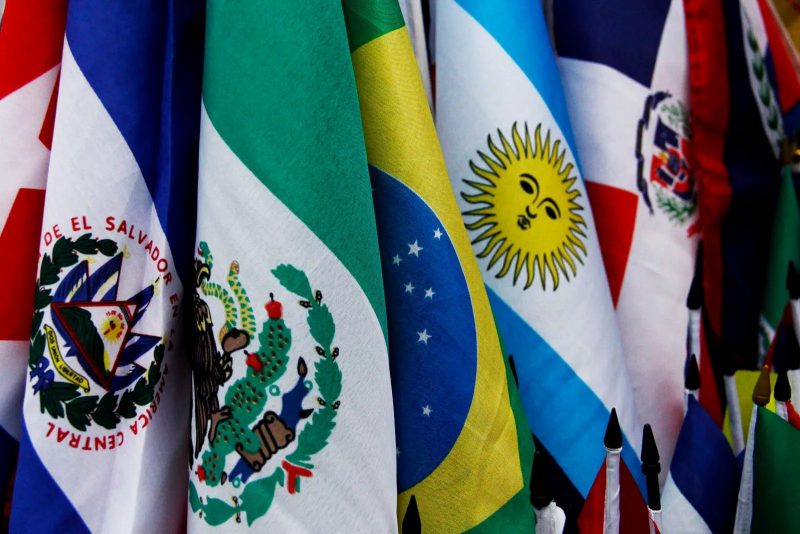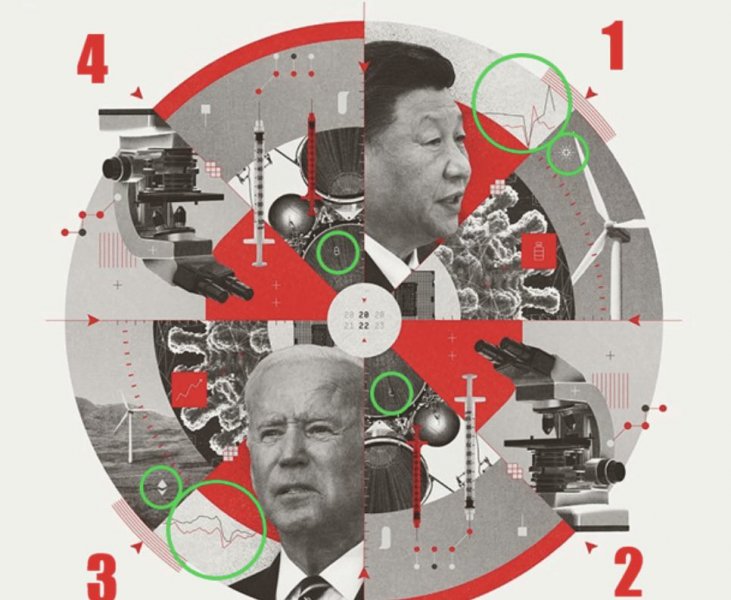The World in 2022
According to Iran Gate, future historians will likely see 2022 as a turning point because it marked the end of one era and the beginning of another. The great war threat with nuclear attacks has returned to Europe, and the doors of U.S. politics have been relatively firmly closed to strategic engagement with China.
However, the past twelve months have also brought some good news, particularly the decline of the COVID-19 pandemic in many countries, leading to the end of emergency measures such as social distancing and lockdowns. But overall, 2022 was more filled with events and unpleasant news. Here we briefly write about the most important events of the year that ended just a few days ago.
Farewell to Queen Elizabeth II and Political Turmoil in Britain
A country whose empire once spanned the globe saw the change of three prime ministers in just two months. Also, the longest reign of Elizabeth II ended after seventy years, seven months, and two days on September 8, 2022, when she passed away at the age of ninety-six.
Returning to the topic of the government, the approximate cause of the disruption and disorder at 10 Downing Street was the resignation of more than 50 members of Boris Johnson’s government in July in protest against his seemingly endless scandals during his tenure as prime minister. Johnson agreed to resign, and Liz Truss succeeded him.
However, Truss’s premiership lasted only 45 days, marking the shortest premiership in British history. Truss was the last prime minister whom Queen Elizabeth II asked to form a government. She sealed her fate with immediate tax cuts, which severely devalued the British pound.
Rishi Sunak, who helped topple Johnson, became Britain’s first prime minister of color. Initially, this millionaire of Indian descent and Hindu faith faced a wave of fierce opposition.
Britain seems to be caught in an economic recession with 15% inflation, partly due to the sharp rise in energy prices following Russia’s attack on Ukraine. The larger and major problem causing Britain’s turmoil is that Brexit failed to deliver the promised economic prosperity by its supporters.
Humanitarian Crisis

Russia’s invasion of Ukraine has focused all attention on the flood of immigrants leaving the country, overshadowing the refugee crisis in other parts of the world.
Currently, about 32 million people worldwide are refugees, meaning they have fled their country due to persecution, conflict, or violence and war. If we also consider internally displaced persons, those forced to leave their homes but still living in their home country, this number rises to over 100 million, which is 13 million more than at the end of 2021. To have a clearer picture of this number, one can imagine the combined population of Ireland, Lithuania, and New Zealand.
The increase in the number of refugees and internally displaced persons is partly due to the war in Ukraine. The humanitarian crisis in countries like Syria, Afghanistan, South Sudan, and Yemen remains dire, with no signs of a fundamental resolution to the conflicts.
Syria alone accounts for one-fifth of the world’s refugee population. The only bright and encouraging point in this regard for 2023 is Ethiopia. In early November, the Ethiopian government and Tigray leaders signed a peace agreement, ending a two-year civil war that displaced over 5.1 million people.
Protests in Iran

Even governments that have arisen from protests can be overthrown by other protests. This reality should be noted by the leaders of the Islamic Republic, who faced their most serious challenge since coming to power in 1979 in 2022.
The protests began in September due to the death of Mahsa Amini, a young Kurdish woman who was arrested by the morality police for improper hijab and transferred from detention to a hospital, where she died after being in a coma for two days at Kasra Hospital in Tehran.
When the news of her death reached her hometown of Saqqez, hundreds gathered to protest and condemn the mistreatment of women by the morality police and law enforcement. The demonstrations quickly spread across the country, with Iranians from all social classes and ethnicities joining the protests with the slogan ‘Woman, Life, Freedom.’
The leaders of the Islamic Republic accused the United States and Israel of organizing the protests, although the driving force behind these protests had been set in motion before Mahsa’s death due to political repression, corruption, and government mismanagement of the economy.
The government has tried to suppress the protests with force, resulting in 450 protesters being killed on the streets since the protests began. Meanwhile, there have been public executions of protesters condemned in hasty and show trials for waging war against God and actions against national security.
The continuation of the protests in the face of government repression has led to speculation that Iran is in the early stages of a new revolution. Perhaps, but the government has shown no signs of fragmentation, and no one has emerged as a leader to lead the opposition. Will the continuation and expansion of the protests lead to the fall of the Islamic Republic and open the way for democracy in one of the world’s most fascinating places?
Latin America’s Shift to the Left

Five years are enough to make a difference and change. In 2017, center-right politicians dominated politics in Latin America, but changes began in 2018 with the election of Andrés Manuel López Obrador in Mexico.
Alberto Fernández, a center-left candidate, claimed the presidency of Argentina in 2019, and in Bolivia, socialist Luis Arce won the presidential election in 2020. In 2022, socialist Pedro Castillo became president of Peru, and leftist Gabriel Boric became president of Chile, with Boric being the youngest head of state in the history of this South American country at 35.
Boric’s political agenda was very ambitious, with proposals including increasing taxes for so-called ultra-wealthy individuals to fund necessary social reforms and fundamentally reforming the private pension system.
He proposed the gradual elimination of the prevalent private health insurance system, similar to a plan by U.S. President Joe Biden, which did not receive support from his party members because it was believed it would deprive less affluent sections of society of healthcare.
Boric promised to strengthen public schools and cancel all school debts with the aim of creating a free education system for all and said he wanted to pass a law to guarantee voluntary termination of pregnancy, as Chile has very limited laws on this issue.
The trend toward the left in Latin America continued in 2022 as Xiomara Castro from the Socialist Democratic Party was sworn in as the first female president in Honduras, and former Brazilian president Luiz Inácio Lula da Silva returned to the presidency by defeating center-right Jair Bolsonaro.
These regional shifts to the left in Latin America have a precedent. In the late 1990s and early 2000s, politicians like Hugo Chávez, Lula, and Evo Morales won elections, sparking talks of a ‘pink tide.’ The ‘pink tide’ and the shift to the left are terms used in political analysis to describe the emergence of leftist governments in Latin America’s democracies in the 21st century, moving away from the neoliberal economic model.
Can we talk about the possibility of a second ‘pink tide’ given the recent trend? What is undeniable is that these leaders have a very difficult and challenging path ahead to fulfill their promises to tackle economic, gender, and racial inequalities that plague their countries. Whether they will succeed to some extent or not will be seen in 2023.
Russia’s Invasion of Ukraine

Sometimes intelligence agencies are like the mythical Cassandra. Cassandra was the most beautiful daughter of Priam, and many joined Priam in the Trojan War hoping to marry her until Apollo fell in love with her and taught her prophecy. But because Cassandra did not reciprocate his love, Apollo cursed her to always make correct prophecies that no one would believe. They predict events accurately, only to be disbelieved.
In late 2021, U.S. and British officials warned the rest of the world that Russia would invade Ukraine. In response, many European leaders, including Ukrainian President Volodymyr Zelensky, dismissed the idea of war. However, on February 24, 2022, Russia launched a ‘special military operation,’ claiming it was necessary to prevent Ukraine’s militarization.
To the surprise of the Kremlin and most military experts, Ukraine resisted the initial attack and then began pushing back Russian forces. Moscow abandoned its efforts to capture Kyiv and moved towards the Donbas region in eastern Ukraine. In September, Ukrainians launched a counteroffensive that liberated the northeastern city of Kharkiv.
Six weeks later, Russian forces left the southeastern city of Kherson, leading to speculation that Ukraine might seek to reclaim Crimea, which was annexed by Russia in 2014. Russia’s invasion created significant geopolitical divisions. Western countries rallied behind Ukraine and supported it, while China and most countries in the Global South, despite insisting on the sanctity of national borders, refrained from declaring support for Ukraine.
Putin targeted Ukraine’s critical infrastructure, hoping that winter could achieve what the Russian military could not: breaking Ukraine’s will. Meanwhile, the rest of the world was trying to adapt to the price shocks, energy crisis, and food shortages caused by Russia’s aggression.
The End of the COVID Pandemic

Three years after COVID emerged, it seems the world moved forward in 2022. In September, the head of the World Health Organization announced that the end of the pandemic was well in sight. This was evident in the fact that many countries had lifted lockdowns, travel restrictions, and measures related to the global COVID outbreak from early 2020, thanks to the success of vaccines and appropriate treatments.
The only exception to this trend was China. Even long after other countries had lifted COVID-related restrictions, China continued its zero-COVID policy, opting to impose strict lockdowns and restrictions whenever and wherever outbreaks occurred.
In late 2022, people in China began to protest against what Chinese authorities called their great achievement. In December, Beijing was forced to ease its COVID restrictions. However, due to the lack of an effective vaccine, refusal to import Western vaccines, and a large population, the COVID death toll in China is likely to rise sharply in 2023.

